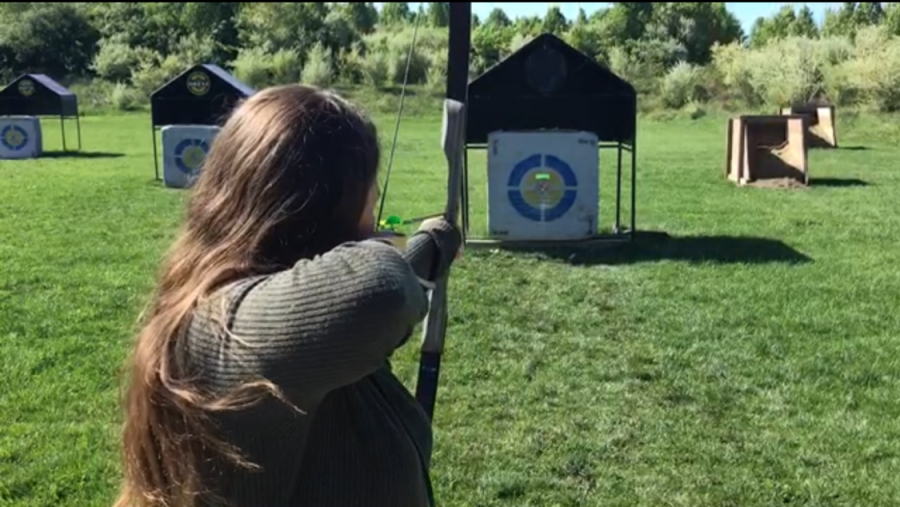Alder students break sports norms by participating in non-school sanctioned sports
Junior, Edden Eisan shooting her bow.
March 9, 2023
Jonathan Alder offers over 23 school sports, which are all broken down and grouped into fall, winter, and spring seasons. All of these sports are just the average events you would expect any high school to offer and have for years. What most people don’t realize, however, is that there are a handful of other competitive sports that aren’t often recognized simply because high schools don’t generally offer them.
Junior Edden Eisan is one of the few people at JA who competes in a non-sanctioned sport. Eisan has done archery competitively for three years after receiving a bow when she was six years old.
An archery match begins with two competitors going head to head in a best-of-five set match. In each set, one archer gets to shoot three arrows at a target and the competitor with the best accuracy or highest score is awarded 2 points for each set they win. Eisan competes at a local archery ranch.
While archery is conducted with shooting bows and arrows, Eisan explains that it is really one of the safest and most inclusive sports.
“Theoretically it is one of the safest sports because it doesn’t really involve other people,” Eisan says. “So as long as you know what you’re doing and the people on the range know what they’re doing, then there is nothing that can really go wrong and if you have any kind of medical illness or disabilities, they design bows specifically for certain people, and people who are willing to train with people who might be at a disadvantage.”
Eisan chooses archery because it is a fun, competitive sport that comes with a massive support system behind you.
“I would want people to know that archery is a really fun sport and I have never met someone either at a range or an archery club that has not been super nice or helpful .There is always someone willing to give you a compliment or advice.”
Freshman Ella Polston also described her non-school sanctioned sport as exciting and fierce.
Polston found her love for fencing when she was just a little kid and has done it for six years now. “My cousin actually used to fence and I went to go watch him when I was little and was just like, ‘I want to try this,’” she says.
She belongs to a fencing club that, just like other sports clubs, offers things like tournaments, practices, and private lessons.
A typical fencing match is referred to as a “bout,” a nine-minute match divided into three periods with breaks in between. In order to win, an opponent must get 15 touches, which ends the bout.
Polston says that despite the prejudice surrounding fencing it is not the elite ”rich people” sport people think it is.
“Fencing is not this big fancy sport that most people think only rich people do. It costs about the same as any sport you put time and effort into. And basically, everyone should try it.”
Archery and fencing are just the tip of the iceberg for less known sports. Just like other athletes, passion and fun is what drives people to participate in sports whether offered in a school or not.









